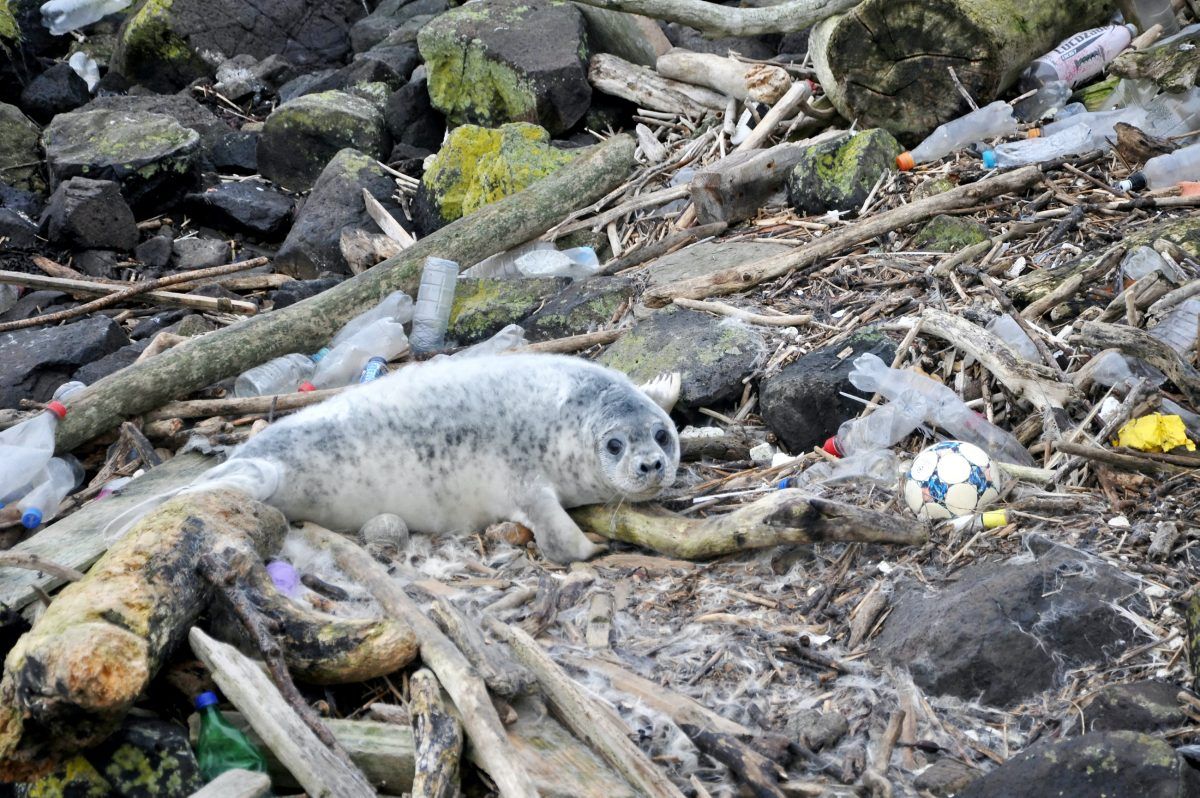
credit;SWNS
People are ingesting around 50,000 tiny bits of plastic every year through their food and drink, according to a new study.
Researchers found that bottled water may be one of the biggest sources of the microparticles – which may endanger health.
Microplastics are also abundant in marine life that eat rubbish dumped in the sea – ending up in the fish on our plates, according to the findings.
Plastics were found in every human stool sample taken from participants across the world – including the UK. They contained nine different types.
Lead researcher Dr Philipp Schwabl, of the Medical University of Vienna in Austria, said: “This is the first study of its kind.
“It confirms what we have long suspected, that plastics ultimately reach the human gut.”
Microplastics include broken-down plastic waste, synthetic fibres and beads found in personal hygiene products.
They are known to harm marine life, which mistake them for food, and can be consumed by humans too via seafood, water or other food and drink.
The risk to people is still not known but there are concerns they can accumulate toxic chemicals and the tiniest could enter the bloodstream.
Dr Schwabl said: “Of particular concern is what this means to us, and especially patients with gastrointestinal diseases.
“While the highest plastic concentrations in animal studies have been found in the gut, the smallest microplastic particles are capable of entering the blood stream, lymphatic system and may even reach the liver.
“Now that we have first evidence for microplastics inside humans, we need further research to understand what this means for human health.”
The faeces of all eight volunteers – who also came from Finland, Italy, Japan, the Netherlands, Poland, Russia and Austria – had hundreds of pieces of plastic.
The most common were polypropylene and polyethylene-terephthalate (PET) – both found in food and drink packaging.
Dr Schwabl said: “All eight stool samples tested positive with an average of 20 microplastics per 10 g of human stool.”
The daily stool excretion of an average adult is about 100g – meaning there will be 200 bits of plastic. Over the course of a year this will equate to around 50,000.
Dr Schwabl said: “Polyethylene and polyethylene terephthalate accounted for the largest share of plastics found in human stool.”
His team also detected seven other forms of plastic types – suggesting there are many different sources of ingestion.
It’s estimated the annual intake of microplastics per person from shellfish, tap water and salt is up to 11,000, 5,800 and 1,000 respectively.
This is on top of around 70,000 being breathed in through polluted air by some people. The particles are present in dust.
Dr Schwabl said: “Bottled water may also be a strong contributor to microplastic ingestion, with an average of 118 to 325 particles per litre, for a total of 90,000 microplastics annually if the intake comes entirely from these sources.”
Microplastics are less than 5mm in width and are used in various products for specific purposes.
They are also created unintentionally by the breaking down of larger pieces of plastic through weathering, degradation, wear and tear.
Dr Schwabl said microplastics could damage the gastrointestinal tract.
He said: “It could affect the tolerance and immune response of the gut by bioaccumulation or aiding transmission of toxic chemicals and pathogens.”
In the study, published in the journal Annals of Internal Medicine, each person kept a food diary in the week leading up to their stool sampling.
The diaries showed that all participants were exposed to plastics by consuming plastic wrapped foods or drinking from plastic bottles.
None of the participants were vegetarians and six of them consumed sea fish.
The stools were tested at the Environment Agency Austria for 10 types of plastics following a newly developed analytical procedure.
Global plastics production has increased substantially from the 1950s and continues to grow every year.
Up to five per cent of all plastics produced end up in the seas. Once in the ocean, plastics are consumed by sea animals and enter the food chain where ultimately, they are likely to be consumed by humans.
Significant amounts of microplastic have been detected in tuna, lobster and shrimp. Beyond that it is highly likely that during various steps of food processing or as a result of packaging food is being contaminated with plastics.
More than 350 million tons of plastic are produced each year. Dr Schwabl and colleagues called for further to determine the effects of plastic ingestion on human health.
Previous studies on fish have also found plastics in the gut. Microplastics have been found in tap water around the world, in the oceans and in flying insects.
An investigation in Italy found microplastics present in soft drinks. In birds, the ingestion of plastic has been found to remodel the tiny finger-like projections inside the small intestine, disrupt iron absorption and add to stress on the liver.
Dr Schwabl said: “The smallest microplastic particles are capable of entering the bloodstream, the lymphatic system, and may even reach the liver.
“Now that we have the first evidence for microplastics inside humans, we need further research to understand what this means for human health.”
Britain is planning to ban plastic straws, drink stirrers and cotton buds, which can turn into microplastics as they break down, from next year.